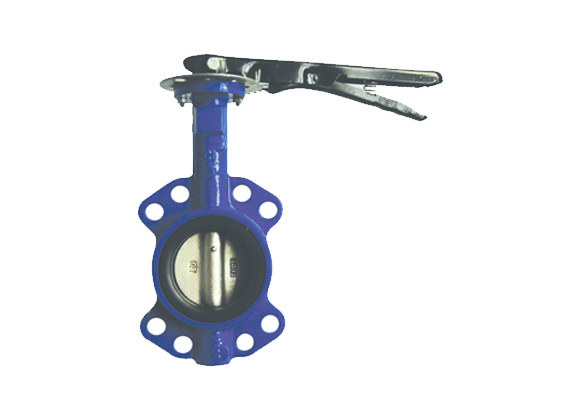Jul . 25, 2025 13:01
Ningjin Thriveon Valve Co., Ltd. is a leading manufacturer of industrial valves with over 15 years of expertise in designing and producing high-performance flow control solutions. Based in China's valve manufacturing hub, we specialize in engineered valve solutions for demanding industrial applications worldwide.

The Wafer Type Butterfly Valve has a simple structure, compact design, and excellent flow regulation capabilities. Characterized by its wafer-style installation between flanges, this valve type offers significant advantages in weight reduction, cost savings, and installation flexibility across numerous industrial applications. The rotating disk mechanism provides quick shut-off capabilities while minimizing pressure drop, making it ideal for flow control in large diameter piping systems.
View Product DetailsThe global valve market has shown significant growth, projected to reach $85 billion by 2026 according to McIlvaine Company analysis. Within this expansion, Wafer Type Butterfly Valve solutions have gained approximately 15% market share in the industrial flow control segment. This growth is driven by several key trends:
1. Material Advancements: Developments in composite materials and specialized coatings extend valve lifespan in corrosive environments. Enhanced polymeric seat materials enable the Wafer Type Butterfly Valve to handle temperatures up to 400°F (204°C) with improved chemical resistance.
2. Smart Valve Integration: IoT-enabled valve solutions incorporating position sensors and wireless communication modules are becoming industry standard. These allow real-time monitoring of Wafer Type Butterfly Valve performance parameters including torque, cycles, and seal integrity.
3. Zero-Leakage Standards: Recent API 598 and ISO 5208 revisions have increased pressure testing requirements, driving improvements in seat design and disk sealing technologies for higher performance wafer valves.
4. Sustainable Manufacturing: Environmental regulations are influencing design priorities, with reduced fugitive emissions (ISO 15848 standards) and longer service intervals being key product differentiators in modern valve manufacturing.
| Parameter | Standard Range | Max Performance | Standard Compliance |
|---|---|---|---|
| Pressure Rating (PN) | PN6-PN40 | PN64 (special design) | ASME B16.34, EN 1092 |
| Size Range | DN40-DN1200 (1.5"-48") | DN2000 (80") | ASME B16.10, ISO 5752 |
| Temperature Range | -20°C to 150°C | -50°C to 400°C | MSS SP-67, API 609 |
| Body Materials | Cast Iron, Ductile Iron | SS316, Duplex, Super Duplex | ASTM A216, A351 |
| Seat Materials | EPDM, NBR, Viton | PTFE, Metal Seat, UHMWPE | FDA, USP Class VI |
| Leakage Class | Class IV (ISO 5208) | Class VI (Zero Leakage) | API 598, ISO 5208 |
| Operation Torque | 10-150 Nm | 2-600 Nm (size dependent) | ISO 5211, MSS SP-90 |
The compact design and chemical resistance of Wafer Type Butterfly Valve make them ideal for water distribution, filtration systems, and sludge handling applications. EPDM-seated valves handle water at temperatures up to 120°C with low torque requirements.
Specialized alloy bodies with PTFE or PFA-lined seats provide superior corrosion resistance for aggressive media. Concentric Wafer Type Butterfly Valve designs offer bubble-tight shutoff for volatile chemicals at pressure classes up to PN40.
In power plants, high-performance wafer valves handle cooling water, condensate, and auxiliary systems. Fire-safe designs with metal seats ensure reliability in critical thermal applications with temperatures reaching 400°C.
Energy efficiency demands have increased adoption of Wafer Type Butterfly Valve in heating and cooling circuits. Low-pressure drop designs improve system efficiency with precise flow modulation capabilities.
Sanitary wafer valves with FDA-compliant materials (EPDM, silicone) and smooth finishes meet 3-A standards. Drainable designs prevent bacterial growth with CIP/SIP compatibility for pharmaceutical applications.
Seawater-resistant valves with duplex stainless steel bodies and corrosion protection systems withstand harsh maritime environments. Compact wafer design saves critical space in vessel engine rooms and piping systems.
Proper installation extends service life and maintains performance of Wafer Type Butterfly Valve systems:
Installation Guidelines:
Maintenance Recommendations:
Wafer valves typically have lower pressure ratings (PN10-PN40) compared to lug-type valves (up to PN64). This difference results from the wafer design relying entirely on flange compression for sealing integrity. At high pressures (>150 psi), the through-bolt compression system may become insufficient, potentially leading to joint failure. For applications exceeding PN40, lug-type valves provide more reliable sealing through independent bolt circle connections. (Ref: ASME B16.34 Valve Pressure Ratings)
Seat material selection depends on temperature and chemical compatibility:
Always consult chemical compatibility charts and conduct material testing for critical applications. (Ref: ASTM D471 Elastomer Compatibility Testing)
Industry standards define leakage classes:
High-performance Wafer Type Butterfly Valve can achieve Class VI leakage with PTFE or metal seats following API 598/ISO 5208 test methods. (Ref: API 598 Valve Testing Standards)
Wafer valves should be installed with proper pressure orientation. Most wafer designs are bidirectional, but eccentric valves (double/triple offset) function unidirectionally with pressure against the seal side. Installing valves against flow direction can cause:
Always verify flow direction indicators on valve bodies. (Ref: MSS SP-67 Installation Guidelines)
Operating torque varies significantly with:
General torque ranges:
Breakaway torque exceeds running torque by 25-40% for soft-seated valves. Specify actuators at 125% of maximum required torque for reliability. (Ref: ISO 5211 Actuator Mounting Standards)
Key international standards include:
Industry-specific standards (API, AWWA) often incorporate these base specifications with additional requirements. (Ref: API Standards for Valve Manufacturers)
Valid fire safety certifications for valves include:
Certified valves undergo rigorous testing:
Always request original certification documents with purchase of fire-safe rated valves. (Ref: API Technical Report on Fire Test Valves)
Related Products
 Call us on:
+86-311-86935302
+86-311-86935302
Call us on:
+86-311-86935302
+86-311-86935302
 Email Us:
info@thriveonvalve.com
Email Us:
info@thriveonvalve.com South of Huanmadian Village Town, Ningjin County, Xingtai, Hebei Province, China
South of Huanmadian Village Town, Ningjin County, Xingtai, Hebei Province, China